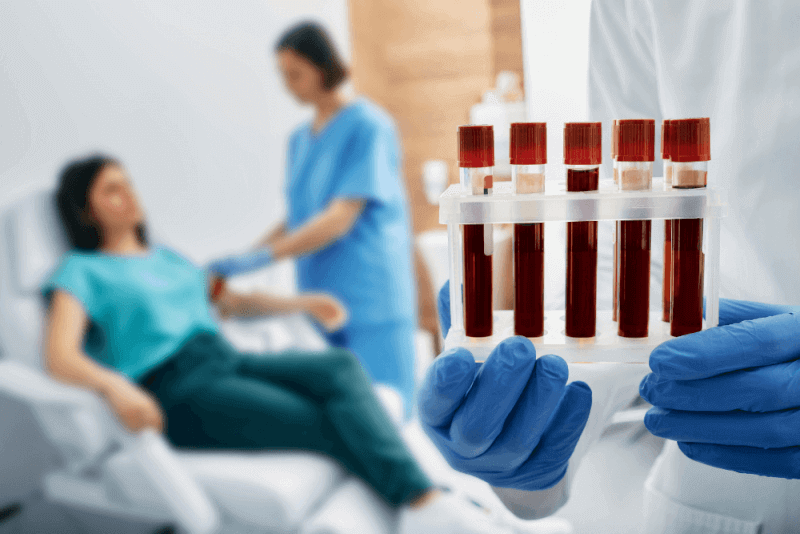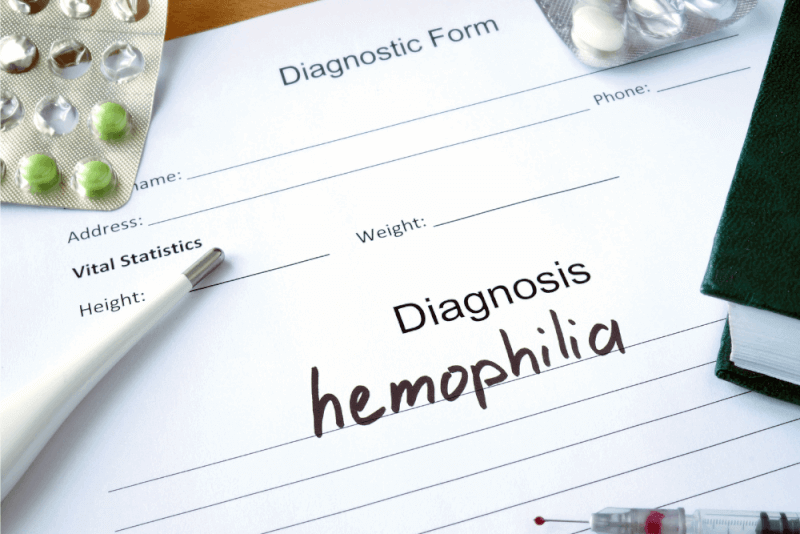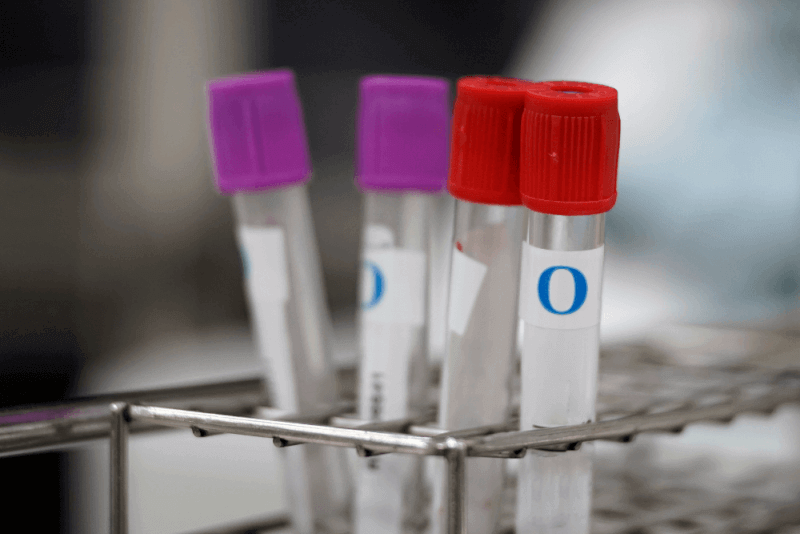Leukocytes are white blood cells and are found in the blood. Their job is to protect the body from infections and other diseases. When the value of white blood cells is higher than normal values, we speak of leukocytosis. A high value usually means that you are ill or particularly stressed.
Causes of Leukocytosis
As white blood cells are divided into different groups, leukocytosis is also divided into five different types, so the causes of leukocytosis are often different:
- Neutrophilia: Neutrophilia occurs when the number of neutrophils in the blood increases. Neutrophilic granulocytes are most common among leukocytes with a frequency of 40-60%. Because of its frequency, neutrophilia is one of the most common forms of leukocytosis and is primarily caused by infection and inflammation.
- Lymphocytosis:This is 20% to 40% of leukocytes. A high value is also one of the common variants of leukocytosis. Lymphocytosis is associated with viral infections and leukemia.
- Monocytosis: In monocytosis, the number of monocytes is particularly high. Because monocytes make up only 2% to 8% of white blood cells, monocytosis is rare and is associated with certain infections and cancers.
- Eosinophilia: Eosinophilia means high levels of eosinophils in the blood. They make up only 1% to 4% of the blood count and are therefore a particularly rare form of leukocytosis. This increased value is often caused by allergies and parasites.
- Basophilia: This is a high level of basophils that make up only 0.1% to 1% of the blood. Therefore, basophilia as a form of leukocytosis is extremely rare and associated with leukemia.
Symptoms of Leukocytosis
Typical symptoms of leukocytosis are:
- Fever, pain and other symptoms at the site of infection
- Leukemia and other types of cancer with fever, easy bruising, weight loss, night sweats
- Hives, itchy skin, rashes due to allergic skin reaction
- Difficulty breathing and wheezing due to an allergic reaction in the lungs
If the number of white blood cells is high, the blood can thicken during leukocytosis and can no longer flow properly. This is called hyperviscosity syndrome and is rarely seen in leukemia. This is a medical emergency that can cause the following:
- Paralysis
- Vision problems
- Atemprobleme
- Bleeding from mucous membranes such as the mouth, abdomen and intestines
The causes of leukocytosis are usually classified according to the type of white blood cells. The table below gives an overview of these and their causes.
White blood cell type | Causes |
Neutrophilia | Infections |
Lymphocytosis | Viral infection |
Eosinophilia | Allergies and allergic reactions, especially hay fever and asthma |
Monocytosis | Some infections such as Epstein-Barr virus, tuberculosis, fungal infection |
Basophilia | Leukemia |
Leukocytosis Treatment Methods
Because leukocytosis can have many causes, treatment is often very different. Below is a summary table of causes and treatment options.
Main cause | Treatment |
Infections | Antibiotics |
Inflammation | Anti-inflammatory anti-inflammatory treatment inflammatory drugs |
Allergic reaction | Antihistamine |
Leukemia | Chemotherapy |
Drug reaction | Change the medicine |
Stress, fear | Treatment of triggers |
Hyperviscositätssendrom | Intravenous fluid |
Fluid and electrolyte deficiency | IV fluid |
When to see a doctor?
If you observe the following symptoms, it may be helpful to see a doctor. This will help you clarify the cause of the symptoms:
- High fever
- Rapid bleeding
- Fast bruises
- Unwanted weight loss
- Almost no appetite
- Nausea
- Weakness, fatigue
- General malaise
- In men: painful and prolonged erections
However, leukocytosis can often go unnoticed. However, there is a risk of stroke. If you notice the following symptoms in yourself or someone close to you, call the emergency services immediately:
- Parts of the face are sagging or numb
- You feel weakness in your arm or leg
- Unconsciousness, confusion
- Speech difficulty
- Dizziness, severe headache or vision loss
- Chest pain
- Difficulty breathing
- Unstoppable bleeding
- Pain or tingling in your arms, legs or stomach
- Sudden back pain
Leukocytosis Normal Values
In leukocytosis, the number of leukocytes in the blood is significantly higher than the normal range. One way to check the value is to compare it to the age-appropriate norm, as there can be a lot of variation between age groups.
In newborns up to 2 years of age, its value is between 6.5 – 15.0 million per microliter. This specification is often abbreviated in medical circles as: *10³/ µl. The normal value decreases with age and ranges from 5.0 to 12.0 *10³/ µl at 2-6 years of age. 6 to 12 year olds normally have a value of 4.5 to 11.0 *10³/ µl and 12 to 18 year olds 4.5 to 10.5 *10³/ µl.
There are also gender differences from adulthood, with women having a value of 4.0 – 11.2 *10³/ µl and men 3.9 – 10.1 *10³/ µl. In women, it is still characteristic that the value increases to 10 – 16 *10³/ µl during pregnancy and can be as high as 25 *10³/ µl during labor.
How is Leukocytosis Diagnosed?
There are three diagnostic options to find out if the white blood cell count is higher than normal and if there is a disease:
Complete blood count with differential diagnosis: This is the most common test to check white blood cell counts. Blood is taken from the patient’s vein and fed into a device that determines blood values.
Peripheral blood sampling: A small sample of blood is drawn on a slide and then examined under a microscope. This is mainly used when neutrophilia or lymphocytosis is suspected.
Bone marrow biopsy:: White blood cells are made in the bone marrow and then released into the blood. A biopsy is usually performed when an elevated value is detected during peripheral blood sampling. The bone marrow sample is taken from the center of the bone – usually from the hip – with a long needle and then examined under a microscope. This allows the doctor to determine if there are problems with the production or release of white blood cells or if the cells show any abnormalities.
How to Prevent Leukocytosis?
It helps to take the following preventive measures to prevent leukocytosis from occurring in the first place:
- Healthy lifestyle
- Regular, thorough hand washing
- Avoid allergy triggers
- Smoking
- Reduce stress
In most cases, leukocytosis is simply a reaction to infection or inflammation. As a rule, you shouldn’t worry – but it can trigger serious diseases such as leukemia or other types of cancer. It is therefore important to check your blood values.







